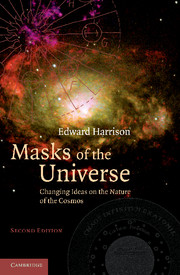Book contents
6 - The Infinite Universe
Published online by Cambridge University Press: 27 October 2009
Summary
Etienne Tempier, Bishop of Paris, roundly condemned all who dared to trifle with the power of the supreme being. Scholars and divines were free to admit reason into matters of faith provided full acknowledgment was made to God as an all-powerful being free of self-contradiction. Here was the Trojan Horse, introduced by the well-intentioned bishop, from which sallied forth in years to come thoughts that would topple the towers of the medieval universe.
Professors at Oxford and Paris in the fourteenth century made great progress in clarifying the nature of space, time, and motion. William Heytesbury and his colleagues at Merton College defined velocity and acceleration and then succeeded in calculating by graphical methods the distance traveled in an interval of time by a body having constant acceleration. William of Ockham participated in these studies while fighting a battle against needless abstractions. His celebrated principle of theoretical parsimony – known as Ockham's razor – states that in the use of concepts “it is foolish to accomplish with a greater number what can be done with fewer.”
Jean Buridan, a professor at Paris and formerly Ockham's student, revived the notion of impetus that can be traced back to Hipparchus in the second century B.C. and is now referred to as momentum. According to Buridan, impetus is proportional to the velocity of a body and also its quantity of matter (now referred to as mass), and the impetus of a thrown body maintains the body in a state of motion.
- Type
- Chapter
- Information
- Masks of the UniverseChanging Ideas on the Nature of the Cosmos, pp. 81 - 100Publisher: Cambridge University PressPrint publication year: 2003

